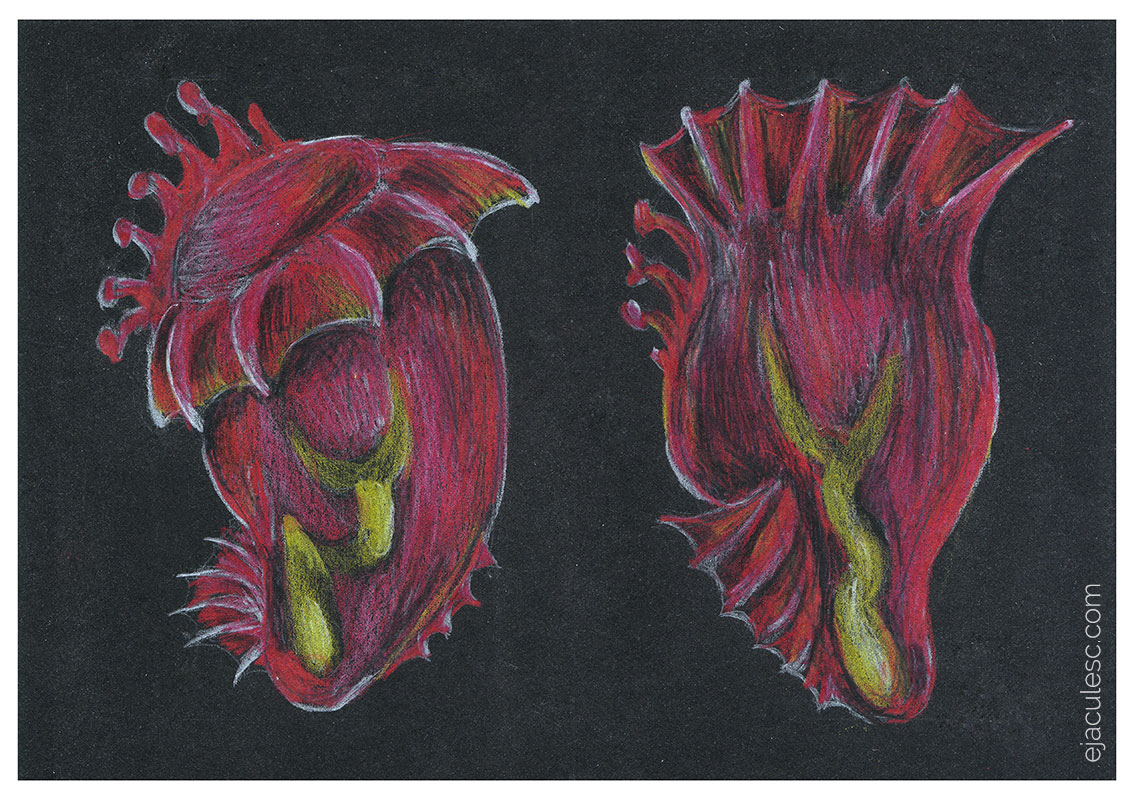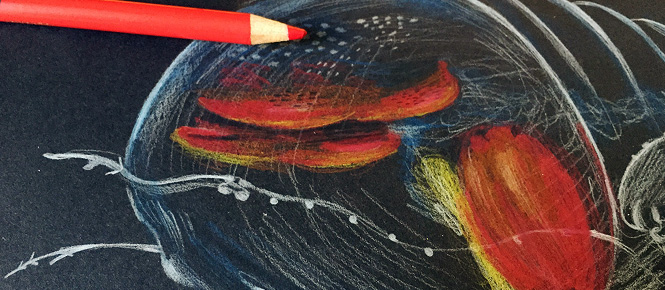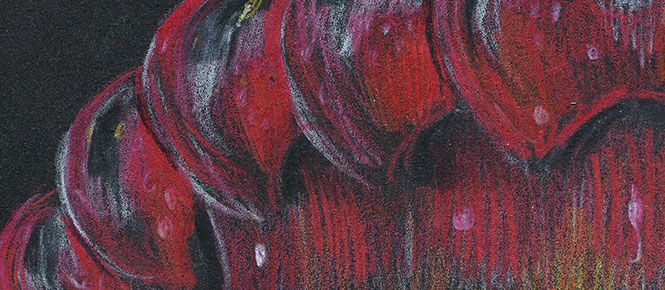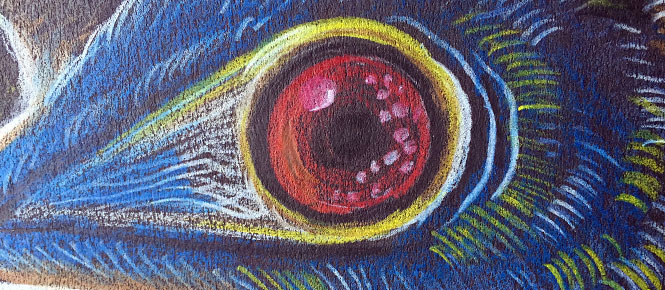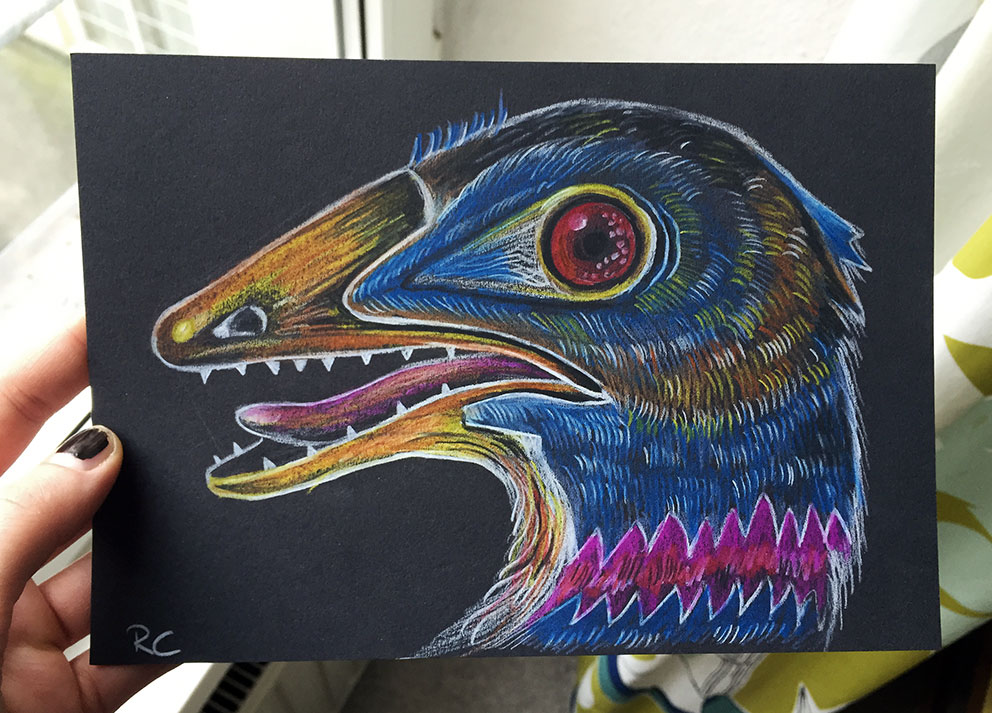Deep Ocean#2 – Giant Amphipod
Deep Ocean#2
The giant amphipod you see here is called Cystisoma. They have been found at depths of 500m - 800m and can get to 12 cm long. The body is mostly transparent, to hide from predators. Transparency is one big advantage at a depth where there are no good hiding places. The big red oval thing is the stomach and the big layer of "meshed" red stuff in the forehead are the eyes. Well it's actually just one big eye which looks mostly straight upwards. It is so big so it can suck in as much of the little light as possible.
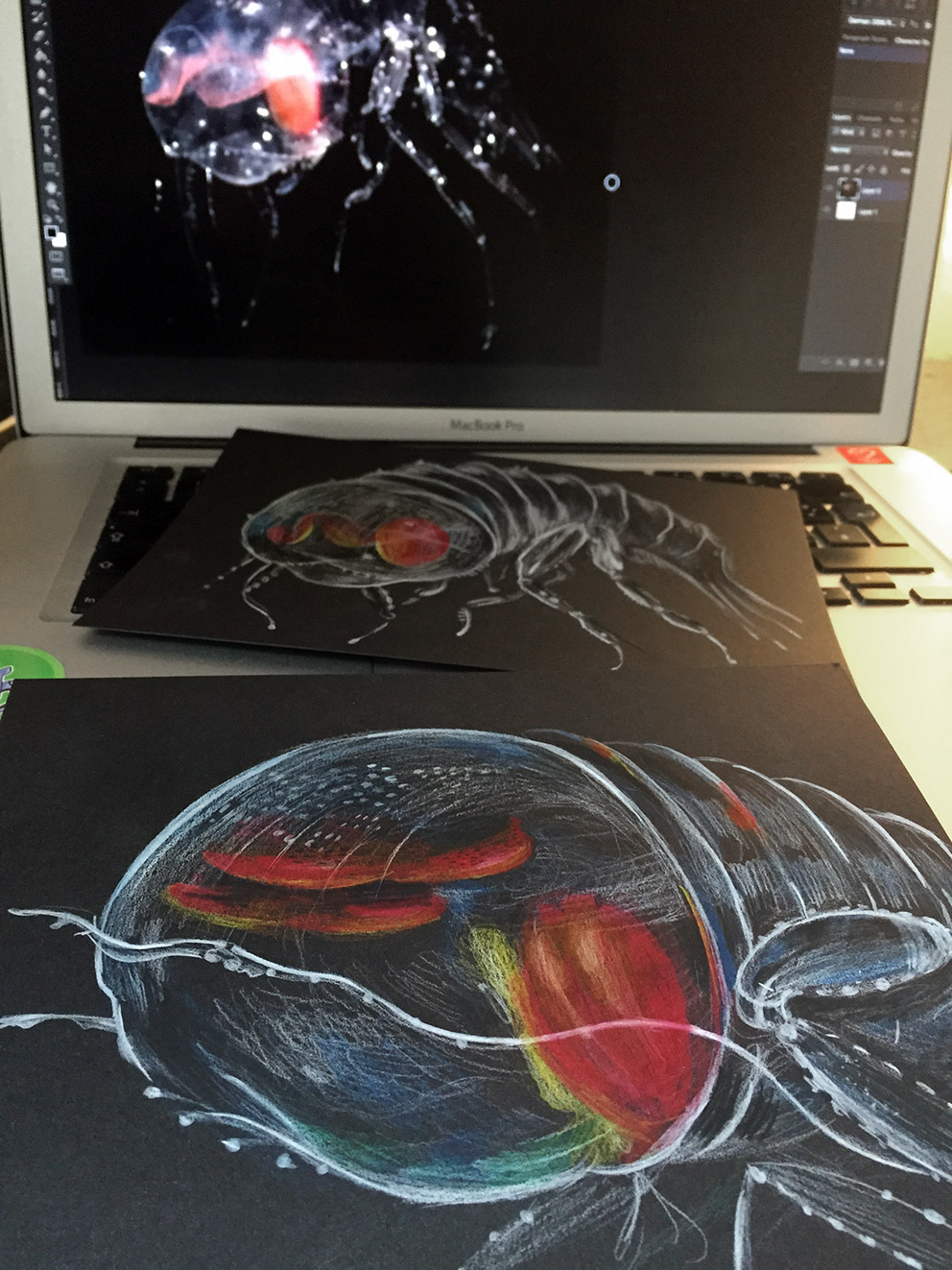
Deep Ocean#1 – Sea Cucumber
Deep Ocean#1
I felt inspired watching BBC's Blue Planet and was particularly fond of episode 2 "The Deep". It is quite interesting to learn about the different camouflage tricks and how to unmask them in the dark. I enjoyed diving into places where animals produce their own glowing lights in almost transparent bodies and in general appear like coming from science fiction movies that have not yet been made.
Here is a sea cucumber. I think this one is called Enypniastes. I used polychromos on black paper. I took screenshots from the documentary as a reference.
